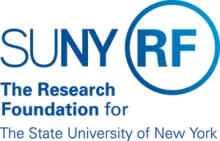Technology Transfer is a significant area of interest for academic faculty and researchers in the SUNY system and those funded on or conducted research through Research, Grants and Contracts. Technology Transfer encompasses a broad range of services including:
Computer software development issues; copyright; patents and inventions; intellectual property, trade secrets, licensing, and other related issues.
For information in addition to that provided on this website, please contact Pamela Dubitsky, the Director of Research, Grants and Contracts at pamela.dubitsky@oneonta.edu.
Patents and Inventions applied for as a result of work fully or partially funded by monies through the Research Foundation for SUNY are subject to the Patents and Inventions Policy of State University of New York as approved by the Board of Trustees on September 19, 1979 and amended November 16, 1988, and provides the "Current Guidelines of the Patent Policy Board" dated October 4, 1985. The policy outlines appropriate steps to be taken to ensure that the public receives the benefit of all inventions made by persons working in State University facilities.
Faculty who wish to make an application for a patent should start the process by completing a New Technology Disclosure Form. The Director of Research, Grants and Contracts, Pamela Dubitsky can also provide additional information on the patent process.
What is copyright?
Copyright is a form of protection provided by the laws of the United States (Title 17, US Code) to the authors of “original works of authorship,” including literary, dramatic, musical, artistic, and certain other intellectual works. This protection is available to both published and unpublished works. Section 106 of the 1976 Copyright Act generally gives the owner of copyright the exclusive right to do and to authorize others to do the following:
- To reproduce the work in copies or phonorecords.
- To prepare derivative works based upon the work.
- To distribute copies or phonorecords of the work to the public by sale or other transfer of ownership, or by rental, lease or lending.
- To perform the work publicly, in the case of literary, musical, dramatic and choreographic works, pantomimes and motion pictures and other audiovisual works.
- To display the work publicly, in the case of literary, musical, dramatic and choreographic works, pantomimes, and pictorial, graphic or sculptural works, including the individual images of a motion picture or other audiovisual work; and, in the case of sound recordings, to perform the work publicly by means of a digital audio transmission.
The Research Foundation for SUNY adheres to the Copyright Policy 335.29 established by the SUNY Board of Trustees. It states:
Generally, the members of the staff of the university shall retain all rights to copyright and publish written works produced by them. However, in cases where persons are employed or directed within the scope of their employment to produce specific work subject to copyright, the university shall have the right to publish such work without copyright or to copyright it in its own name. The copyright will also be subject to any contractual arrangements by the university for work in the course of which the writing was done. Staff members will be expected not to allow the privilege to write and retain the right to their work to interfere with their university duties. In those cases where an author desires the help of university facilities, arrangements should be made through the administrative staff of the author's institution in advance with respect to the assistance which may be appropriately given and the equity of the university in the finished work.
Additional information, answers to copyright-related questions, and procedures for registering a copyright can be round at the website of the US Copyright Office.
